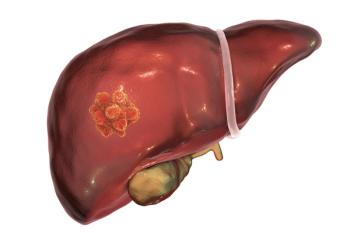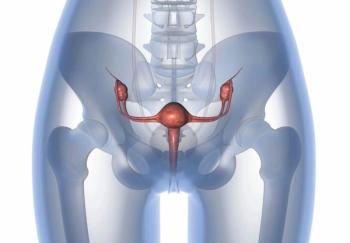
EHA 2025: Top 5 Takeaways for Hematologic Malignancy Management
Data from the 2025 EHA Congress show developments in novel therapeutic strategies across different multiple myeloma, leukemia, and lymphoma populations.
At the
CancerNetwork® covered the latest data featured at the congress. Here are the top 5 articles on the results that may affect clinical practice in hematologic oncology.
Combining polatuzumab vedotin (Polivy) with rituximab (Rituxan), gemcitabine, and oxaliplatin (Pola-R-GemOx) improved outcomes such as overall survival (OS) and progression-free survival (PFS) vs R-GemOx alone among patients with transplant-ineligible relapsed/refractory diffuse large B-cell lymphoma (DLBCL) in the phase 3 POLARGO trial (NCT04182204).1
With a median OS of 19.5 months in the Pola-R-GemOx arm and 12.5 months in the R-GemOx arm, polatuzumab vedotin–based treatment reduced the relative risk of death by 40% (stratified HR, 0.60; 95% CI, 0.43-0.83; P = .0017). Data also showed a median PFS of 7.4 months (95% CI, 6.2-11.7) vs 2.7 months (95% CI, 2.4-3.3) in each respective arm (stratified HR, 0.37; 95% CI, 0.27-0.51; P < .0001) as well as objective response rates (ORRs) of 52.7% and 24.6%.
Of note, peripheral neuropathy occurred in 57.0% of patients in the Pola-R-GemOx arm and 28.8% in the R-GemOx arm. In each respective arm, thrombocytopenia affected 53.1% vs 40.8% and neutropenia occurred in 41.4% vs 41.6%.
“The POLARGO data reinforce the benefit of combining polatuzumab vedotin with chemotherapy in the treatment of DLBCL,” Matthew Matasar, MD, chief in the Division of Blood Disorders at the Rutgers Cancer Institute, professor of medicine at the Rutgers Robert Wood Johnson Medical School, and editorial advisory board member of the journal ONCOLOGY, stated in a press briefing about these results.
Data from the phase 3 VIALE-A trial (NCT02993523) demonstrated the safety and feasibility of adding revumenib (Revuforj) to azacitidine (Vidaza) and venetoclax (Venclexta) for older patients with newly diagnosed acute myeloid leukemia (AML) harboring NPM1 mutations or KMT2A rearrangement (KMT2Ar).2
The ORR was 90.5% and 86.4% with revumenib administered at 113 mg and 163 mg every 12 hours on days 1 to 28, respectively. Additionally, treatment yielded an ORR of 100% for patients with KMT2Ar and 85.3% for those with NPM1-mutated disease.
The most common grade 3 or higher adverse effects (AEs) included febrile neutropenia (26%), acute kidney injury (19%), dyspnea (14%), corrected QT interval with Fredericia formula (QTcF) prolongation (12%), hypokalemia (12%), and muscular weakness (12%). Grade 1/2 toxicities consisted of nausea (60%), constipation (53%), and QTcF prolongation (44%).
“This is the first clinical trial performed [with] a menin inhibitor plus azacitidine and venetoclax for patients who are newly diagnosed [and] older or unfit with AML who have NPM1 mutations or KMT2Ar…. Azacitidine, venetoclax, and revumenib are highly active [in this population],” Joshua Zeidner, MD, associate professor of medicine and chief of leukemia research at the University of North Carolina School of Medicine, stated in a presentation of these data.
In the phase 3 BM12 CAST trial (ACTRN12618000505202), graft-vs-host disease (GVHD)–free relapse-free survival (RFS) improved with the use of the calcineurin inhibitor cyclosporin in combination with cyclophosphamide vs standard prophylaxis among patients with aggressive blood cancers undergoing stem cell transplant.3 Findings were presented at the congress and simultaneously published in the New England Journal of Medicine.4
The median GVHD-free RFS was 26.2 months (95% CI, 9.1-not reached [NR]) with cyclophosphamide plus cyclosporin vs 6.4 months (95% CI, 5.6-8.3) with standard cyclosporin plus methotrexate (HR, 0.42; 95% CI, 0.27-0.66). Data for OS, although immature, favored the cyclosporin/cyclophosphamide arm at the time of analysis; the 2-year OS rates were 83% with the experimental regimen vs 71% with standard prophylaxis (HR, 0.59; 95% CI, 0.29-1.19).
The cumulative incidence of grade 3/4 acute GVHD at 3 months was 3% (95% CI, 1%-10%) with cyclophosphamide/cyclosporin and 10% (95% CI, 4%-19%) with methotrexate/cyclosporin. The rates of serious AEs were comparable between the treatment arms after the first 100 days following transplant.
“Cyclosporin and cyclophosphamide offer a new standard of care for prevention of GVHD for patients with aggressive blood cancers undergoing transplant from a matched related blood stem cell donor. The study demonstrates the power of cooperative group clinical trials in addressing patient-specific care and outcomes,” lead study author David Curtis, MBBS, PhD, FRACP, FRCPA, a clinical hematologist and director of malignant hematology research at the Australian Centre for Blood Diseases, Monash University, and Alfred Hospital in Melbourne, Australia, said in a press briefing regarding these findings.
Daratumumab (Darzalex) helped prolong the median time from minimal residual disease (MRD) reappearance to significant paraprotein or clinical relapse among patients with multiple myeloma enrolled in the phase 2 PREDATOR-MRD trial (NCT03697655).5
The median event-free survival was NR with daratumumab vs 9.5 months with observation (HR, 0.20; 95% CI, 0.05-0.76; P = .0097). Twelve patients experienced significant paraprotein relapse or clinical relapse, which included 3 in the daratumumab arm and 9 in the observation arm.
No grade 3 or higher AEs occurred among patients who received daratumumab, and the most common hematologic toxicities included anemia (8.3%), lymphopenia (8.3%), and neutropenia (8.3%). Treatment with daratumumab did not significantly affect global health score (P = .59).
“MRD monitoring every 4 months allows detection of MRD relapse before any biochemical progression in 75% of patients,” Krzysztof Jamroziak, MD, PhD, from the Department of Hematology at the Institute of Hematology and Transfusion Medicine in Warsaw, Poland, stated in a presentation on these results. “PREDATOR-MRD results can serve as proof of concept for larger trials with novel MRS assessment techniques and therapies.”
The investigational CD19/CD20-targeted CAR T-cell therapy JNJ-90014496 (JNJ-4496) exhibited preliminary activity among patients with relapsed/refractory LBCL in a phase 1b trial.6
At the recommended phase 2 dose (RP2D) of 75 million CAR T cells, the ORR was 96% (95% CI, 77%-100%) among all patients who received the dose (n = 22). Additionally, data showed an ORR of 100% (95% CI, 69%-100%) among those with 1 prior line of therapy (n = 10).
Grade 3/4 AEs at the RP2D included neutropenia (72%), lymphopenia (16%), anemia (16%), and leukopenia (12%). Cytokine release syndrome and immune effector cell–associated neurotoxicity syndrome of any grade occurred in 88% and 8% of patients who received the RP2D, respectively.
“Safety, efficacy, and [the] pharmacokinetic profile support 75 million CAR-positive T cells as the RP2D of the CD19/CD20 CAR T therapy, JNJ-4496, in a broad population of patients with [relapsed or refractory] LBCL,” said study author Matthew Ku, MBBS, PhD, FRACP, RACP, FRCPA/RCPA, a clinical and laboratory hematologist and the lymphoma stream lead at St Vincent’s Hospital, in a presentation on these data. “These findings support further development of JNJ-4496 in [relapsed or refractory] LBCL.”
References
- Matasar M, Li ZM, Vassilakopoulos TP, et al. Polatuzumab vedotin, rituximab, gemcitabine, and oxaliplatin (Pola-R-GemOx) for relapsed/refractory (R/R) diffuse large B-cell lymphoma (DLBCL): results from the randomized phase III POLARGO trial. Abstract presented at: European Hematology Association 2025 Congress; June 12-15, 2025; Milan, Italy. Abstract S101.
- Zeidner J, Welkie R, Lin TL, et al. Azacitidine, venetoclax, and revumenib for newly diagnosed older adults with acute myeloid leukemia (AML) and NPM1 mutation or KMT2A rearrangement: updated results from the BEAT AML consortium. Abstract presented at: European Hematology Association 2025 Congress; June 12-15, 2025; Milan, Italy. Abstract S138.
- Curtis DC, Purtill D, Lewis C, et al. A phase 3 randomised trial of post-transplant cyclophosphamide for GVHD prophylaxis in matched sibling donor peripheral blood stem cell transplantation: the ALLG BM12 CAST trial. Abstract presented at: European Hematology Association 2025 Congress; June 12-15, 2025; Milan, Italy. Abstract S103.
- Curtis DC, Patil SS, Reynolds J, et al. Graft-versus-host disease prophylaxis with cyclophosphamide and cyclosporin. N Engl J Med. Published online June 13, 2025. doi:10.1056/NEJMoa2503189
- Jamroziak K, Kubicki T, Dytfeld D, et al. Daratumumab or observation for minimal residual disease reappearance in multiple myeloma: results from the PREDATOR-MRD randomized trial. Abstract presented at: European Hematology Association 2025 Congress; June 12-15, 2025; Milan, Italy. Abstract S204.
- Patel K, Rhodes JM, Mountjoy L, et al. A global phase 1b study of JNJ-90014496, a CD19/CD20 bi-specific chimeric antigen receptor (CAR) T-cell therapy, in patients (pts) with relapsed/refractory (R/R) large B-cell lymphoma. Abstract presented at: European Hematology Association 2025 Congress; June 12-15, 2025; Milan, Italy. Abstract S239.
Newsletter
Stay up to date on recent advances in the multidisciplinary approach to cancer.























































































